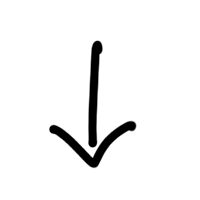IELTS
Listening Online – Sample 9
Listen to the video and answer the questions below.
Then, scroll to the bottom of the page for the answers and a transcript of the recording.
How do ocean currents work?
Questions:
1. Which type of ocean current has the greatest effect on the movement of the ocean’s water?
2. How far beneath the ocean’s surface is the influence of the wind felt?
3. In which direction do gyres move in oceans located above the equator?
4. Changes in what drives the currents in the deep ocean?
5. What do the ocean currents carry that benefits microorganisms?
Answers & transcript
Scroll down for the answers and recording transcript.


Answers:
1. deep ocean current
2. 400 metres
3. clockwise
4. density of seawater
5. nutrients
Transcript:
How do ocean
currents work?
In 1992, a cargo ship
carrying bath toys got caught in a storm. Shipping containers washed overboard and
the waves swept 28,000 rubber ducks and other toys into the North Pacific. But
they didn’t stick together. Quite the opposite. The ducks have since washed up
all over the world, and researchers have used their paths to chart a better
understanding of ocean currents.
Ocean currents are driven by a range of sources: the wind, tides, changes in water density, and the rotation of the Earth. The topography of the ocean floor and the shoreline modifies those motions, causing currents to speed up, slow down, or change direction. Ocean currents fall into two main categories: surface currents and deep ocean currents. Surface currents control the motion of the top 10 per cent of the ocean’s water, while deep ocean currents mobilise the other 90 per cent. Though they have different causes, surface and deep ocean currents influence each other in an intricate dance that keeps the entire ocean moving.
Near the shore, surface currents are driven by both the wind and tides which draw water back and forth as the water level falls and rises. Meanwhile, in the open ocean, wind is the major force behind surface currents. As wind blows over the ocean, it drags the top layers of water along with it. That moving water pulls on the layers underneath, and those pull on the ones beneath them. In fact, water as deep as 400 metres is still affected by the wind at the ocean’s surface.
If you zoom out to look at the patterns of surface currents all over the earth, you’ll see that they form big loops called gyres, which travel clockwise in the northern hemisphere and counter-clockwise in the southern hemisphere. That’s because of the way the Earth’s rotation affects the wind patterns that give rise to these currents. If the earth didn’t rotate, air and water would simply move back and forth between low pressure at the equator and high pressure at the poles. But as the earth spins, air moving from the equator to the North Pole is deflected eastward and air moving back down is deflected westward.
The mirror image happens in the southern hemisphere so that the major streams of wind form loop-like patterns around the ocean basins. This is called the Coriolis Effect. The winds push the ocean beneath them into the same rotating gyres. And, because water holds onto heat more effectively than air, these currents help redistribute warmth around the globe.
Unlike surface currents, deep ocean currents are driven primarily by changes in the density of seawater. As water moves towards the North Pole, it gets colder. It also has a higher concentration of salt because the ice crystals that form trap water while leaving salt behind. This cold, salty water is more dense so it sinks, and warmer surface water takes its place, setting up a vertical current called thermohaline circulation. Thermohaline circulation of deep water and wind-driven surface currents combine to form a winding loop called the Global Conveyor Belt. As water moves from the depths of the ocean to the surface, it carries nutrients that nourish the microorganisms which form the base of many ocean food chains. The global conveyor belt is the longest current in the world, snaking all around the globe. But it only moves a few centimetres per second. It could take a drop of water a thousand years to make the full trip.
However, rising sea temperatures are causing the conveyor belt to seemingly slow down. Models show this causing havoc with weather systems on both sides of the Atlantic and no one knows what would happen if it continues to slow or if it stopped altogether. The only way we’ll be able to forecast correctly and prepare accordingly will be to continue to study currents and the powerful forces that shape them.
Source: TED Ed – Created by Jennifer Verduin
To learn How to Answer Short Answer Questions, click this link.
Like this page?
More IELTS Listening Practice Samples
Here are a few examples of the many practice activities I've created:
Sample 1 – The science of cotton
Sample 2 – Why perfect grades don’t matter
Sample 3 – The loathsome, lethal mosquito
Sample 4 – Will there ever be a mile-high skyscraper?
Sample 5 – The history of African-American social dance
Sample 6 – Families - The generation gap
Sample 7 – Greeting the world in peace
Sample 8 – How cigarettes affect the body
Sample 9 – How do oceans currents work?
Sample 10 – How to make red lentil fritters
To see the full list of practice samples, click this link:



